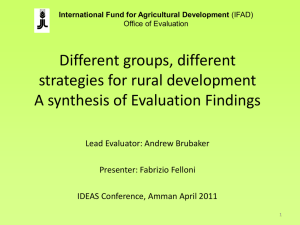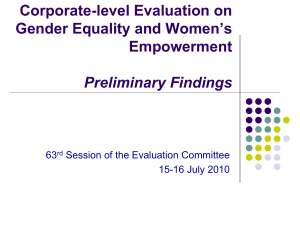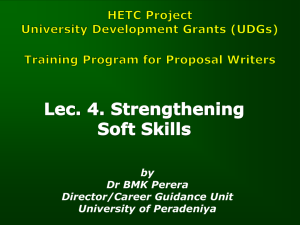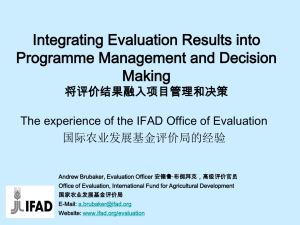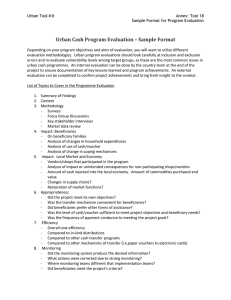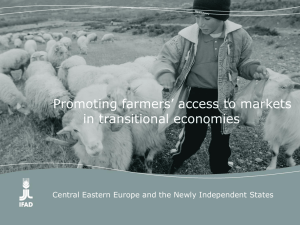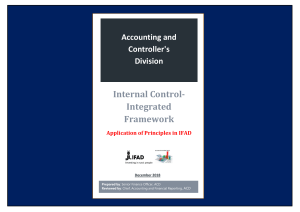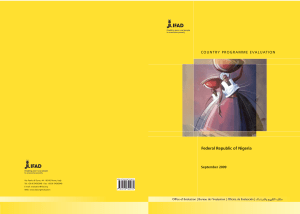IFAD’s social inclusion approach Clare Bishop-Sambrook
advertisement
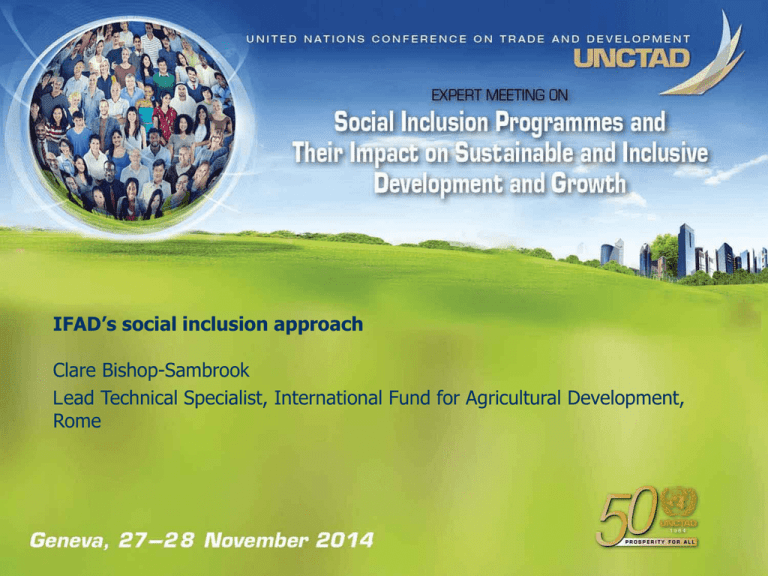
IFAD’s social inclusion approach Clare Bishop-Sambrook Lead Technical Specialist, International Fund for Agricultural Development, Rome IFAD’s social inclusion approach Clare Bishop-Sambrook International Fund for Agricultural Development, Rome http://www.ifad.org/gender/ UNCTAD Social Inclusion Meeting Geneva 28 November 2014 Targeting: The IFAD hallmark • Mandate: poorest rural people with productive potential • Policies: Targeting 2006 Indigenous Peoples 2009 Gender Equality and Women’s Empowerment 2012 • Set targets, track and report on performance Scenario 3 (2): productive capacity building with builtin inclusive effects Targeting and gender in project cycle I. Poverty, gender and livelihoods analysis; target group profile Identification IV. Evaluation and impact assessment Completion Design Implementation and monitoring III. Operational measures, indicators, monitoring; implem support + midterm review II. Targeting and gender strategies and mechanisms Targeting strategy Geographical targeting Self and direct targeting Empowering Target group Priority needs Procedural, implementation and monitoring Enabling Beneficiary outreach of project activities Broad outreach Targeted outreach Agri-business and enterprise development Business + fin management Formal sources of credit Agricultural productivity Food security Savings and credit groups Household mentoring Well -off Participatory planning Economically active poor Infrastructure development Land management Transitory poor FAL classes Poorer Poorest Characteristics • Resources, skills • • Access to services • • Livelihoods • Vulnerabilities Needs + priorities Gender, youth + IP dimension Gender objectives Economic empowerment • Access and control over resources • Participation in profitable activities • Access and control over benefits Decision-making and representation • Within households • Savings and credit groups, farmer groups, producer organizations • Community bodies eg water user assocs Equitable workload balance • Rural infrastructure and services • Labour-saving technologies • Equitable balance between benefits/ remuneration Graduation pathway Basic needs: water + fuel Market linkages Confidence + selfesteem Economic engagement Group formation + strengthening Skills + food + nutrition security Transformation at HH level • • • • • • All HH members participate Set vision together Gender, CC, F+NS analysis Discussion/negotiation within HH Prepare action plan Work and share benefits together Measuring impact Women’s empowerment in agric index Reaching the poor 5 dimensions of empowerment • Movement out of Production poverty Indicators Input in productive decisions Autonomy in production Resources • Economic mobility Ownership of assets Purchase, sale, or transfer of assets • Economic resilience Access to + decisions on credit • Gender empowerment Income Control over use of income • Nutritional outcomes Leadership Group member Speaking in public Time Workload Leisure Source: IFPRI, USAID, OPHI Challenges Retaining focus on lifting poor out of poverty • Change in focus of loan portfolio – private sector, marketdriven approaches • Borrowing countries graduating to MICs • Time and resource constraints during design, implem support • Skills, understanding and commitment of project implementation unit • Weak M&E system • Political pressure – all levels • Time horizon of project “IFAD’s attention to reaching the rural poor makes IFAD unique in the development arena.”
